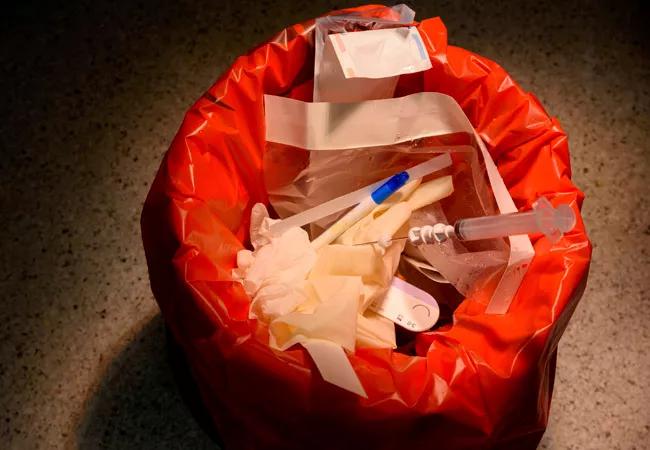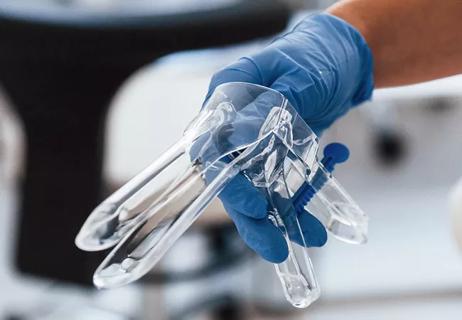Advertisement
Adjusting practices and spreading knowledge will help reduce greenhouse gas emissions

Surgeons and gynecologists are uniquely suited to take the lead on reducing healthcare’s considerable impact on the environment, and the work begins with their own practices.
Advertisement
Cleveland Clinic is a non-profit academic medical center. Advertising on our site helps support our mission. We do not endorse non-Cleveland Clinic products or services. Policy
That’s the message that three physicians in Cleveland Clinic’s Ob/Gyn & Women’s Health Institute, collaborating with doctors from other health systems, delivered in an article published recently in The Journal of Minimally Invasive Gynecology. Titled “Sustainability in Healthcare: A Call to Action for Surgeons and Healthcare Leaders,” the piece describes how hospital systems contribute to greenhouse gas emissions and identifies ways that clinicians can start making a difference almost immediately.
“Most individuals are motivated to combat climate change and might ask ‘what can I do?’ ” says Elliott Richards, MD, Director of Reproductive Endocrinology and Infertility Research at Cleveland Clinic. “The carbon footprint for the average American is about 20 tons of CO2 a year. This may sound like a lot, but when we consider the carbon footprint of governments and industries, the ability of the average individual to make an impact is depressingly small. The U.S. airline industry contributes hundreds of millions of tons of CO2 per year while the U.S. coal industry contributes more than a billion tons per year. In fact, the U.S. healthcare industry creates more greenhouse gas emissions per year than all of the United Kingdom combined.”
On average, U.S. hospitals generate about 14,000 tons of waste each day, says Dr. Richards. “The OR is one of the largest sources of medical waste and carbon emissions for a hospital. When one considers the influence that surgeons have on operating room practices, suddenly surgeons have huge opportunities to make a positive impact—much more than what the average individual has,” adds Dr. Richards.
Advertisement
Dr. Richards and Amy Park, MD, joined first author Kaia M. Schwartz, MD, and physicians from Cedars-Sinai Medical Center and Brigham and Women’s Hospital, in making the case that gynecologists should be leaders on reducing greenhouse gas emissions because they affect infant and maternal health and well-being.
Awareness about the impact of the healthcare industry on the environment has traditionally not been widely considered among providers. However, the authors believe that efforts to educate and offer solutions will resonate with their peers.
“We want to feel like our actions are in line with our values,” says Dr. Park. “That’s what we do in healthcare. So when we realize that we can also have a positive impact on the climate with the choices that we make at work—choices we might not have considered before—there’s real motivation to change.”
And while advocating for change with health system administrators and political leaders is critical, clinicians can also begin by making improvements in their own realm.
“As gynecologists, climate change disproportionately affects our patients,” says Dr. Richards. “Increased incidence of preterm births, low birth weight, miscarriages and preeclampsia have all been linked to climate change. Microplastics are even being detected in human placentas. These are all very relevant to our field.”
Among the culprits that surgeons face every day are single-use instruments in the OR.
“They are one of the greatest contributors, both in the actual waste that’s going into landfills and in energy expended to produce an instrument that is never used again,” says Dr. Richards. “We must demand fully reusable instruments from device manufacturers and support policies that incentivize their development.”
Advertisement
Physicians also can reduce waste created when unnecessary items are included on surgical carts. Dr. Park notes that it’s common for supply packs to include excess drapes. Streamlining is relatively simply, but it takes some effort to make it happen, she says. “They hand you the pack when you walk in, and it has what it has. Getting the cart changed sounds easy, but it requires effort and buy-in if the pack represents a service line set.”
Enforcing standards for what goes into red biohazardous waste trash bags also is important, they say. Red bag waste must be incinerated before disposal, which is time and energy-consuming. In some health systems, as much as 90% of items disposed of in biohazardous waste containers did need to be there.
Beyond adjusting one’s own practice, the authors say that clinicians can band together to advocate for ecologically responsible innovations among leaders in hospitals and health-related industries.
Cleveland Clinic posts information about its carbon emissions on its website and is a member of Healthcare Without Harm’s Climate Council, a group of health systems committed to protecting patients and employees from the impact of climate change. “Cleveland Clinic as an enterprise is leading the way,” says Dr. Richards. “Sustainability needs to be a higher priority for more health care systems and local governments.”
Industrywide, more data is needed on the carbon footprint of individual medical instruments and supplies, and education needs to be done so that caregivers have more specific information of how materials and practices impact the environment.
Advertisement
“As physicians, our mission is a noble one. Our mission is healthcare, and with that, public health. So it can be sobering to shine a light on what our environmental impact actually is,” says Dr. Park. “It is a big wake-up call. I think people want to do the right thing—it’s really just a matter of our not being as aware as we could be of the ways in which we as health care workers can mitigate our impact on the environment. With increased awareness and education, more people will get on board and change will happen.”
Advertisement
Advertisement

Alzheimer’s studies delve into sex-related variances in the expression of the disease

Women’s Comprehensive Health and Research Center addresses unmet needs

A Q&A with Cara King, DO, MS, on the upleveling power of coaching

Surgical video highlights techniques for optimizing myomectomy

New guidelines let the patients steer the process

Researchers examine waste and implore colleagues to take action

Findings reinforce the importance of multidisciplinary care

Specialized unit provides patients with faster, more targeted care